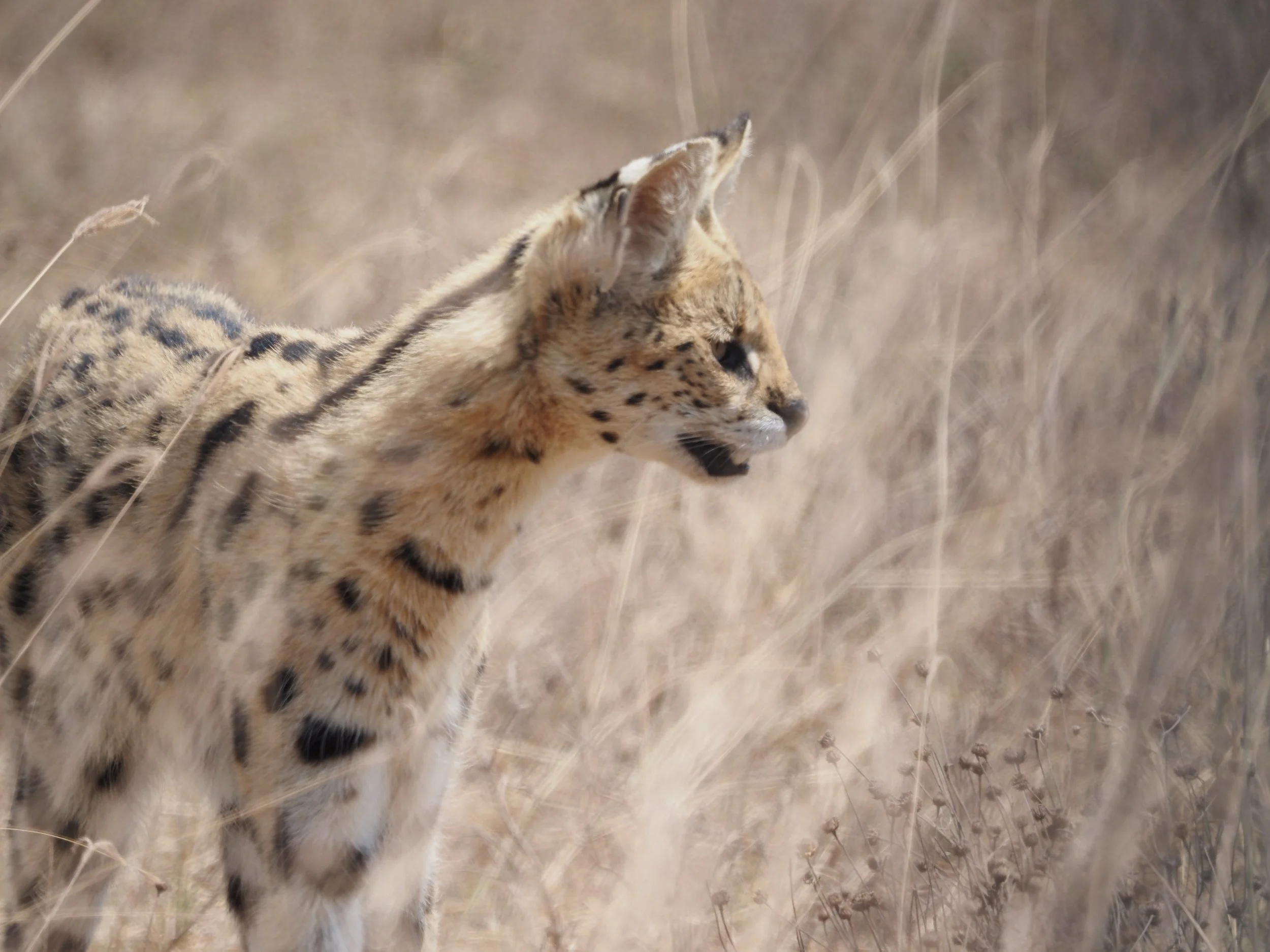Ngorongoro Conservation Area
As soon as it was light on September 7, we shot out of the Nigiri campsite headed for the southern (Naabi Hill) gate of the Serengeti (see note in previous post regarding entry and exit times). We did manage to get to the park gate before our time was up so no extra days were purchased. One other general note on the park passes is that you need to be sure to ‘sign out’ of the parks as well otherwise you will also be charged for extra days. Most of the parks won’t let you exit without getting the exit stamp but it’s something to keep in mind.
At the Naabi Hill gate of the Serengeti, the exit gate and entrance gate for the Ngorongoro Conservation Area (NCA) are adjacent to each other. Stop on the Serengeti side of the gate and sign out of the park and then walk over to the NCA side and sign in before taking your vehicle through the gates. This should save a little embarrassment (very little in my case). The actual park boundary is actually a little distance (southeast) from the gates and you will have the opportunity to stop for the obligatory sign photos. If you are early enough, there may not be many venders hawking jewelry and other handicrafts. They had just started arriving as we arrived.
The topography gets increasingly flat as you leave the Naabi Hill gate and head into the NCA. It also gets increasingly dusty and visibility can get to almost zero as vehicles pass each other. It stays dusty until you approach the hills hosting the Ngorongoro Crater.
The permit for the NCA, the permit to access the Ngorongoro Crater, and the camping reservations/fees all need to be prepaid, online, prior to entering the NCA. Fortunately, the company renting us our safari vehicle offered to do this for us. I’m pretty sure we would have missed this otherwise. We paid for two days in the NCA, two entry permits into the crater, and two nights camping. Unfortunately, we didn’t realize we needed to pay for the Olduvai museum in advance as well. This was a bit of a blow as the Olduvai Gorge is widely considered the location that, through the work of the Leakey’s, solidified human evolution and the origin of our species in Africa.
A bit dejected, we headed to the crater to see the largest concentration of animals in Africa (or so I’ve read somewhere).
We arrived at the entrance to the crater around 10 AM. This was later than we had anticipated so we were surprised to see that there was still a bit of a queue of safari vehicles lined up to go in. The tour guide/driver needs to check in and get your paperwork stamped before going down into the crater. If you are self-driving, they will really, really push you to hire a guide. We didn’t hire a guide and really didn’t feel like we missed out.
The road down into the crater is steep but paved and in good condition. This lasts precisely until you reach the crater bottom and then it becomes dirt/sand/gravel and extremely dusty. The topography is largely flat or gently sloping towards the crater walls. The vegetation varies from sparse grasses and low bushes to taller grasses. There is a smaller section of woodland as well as some marshy areas with tall weeds.
There is an abundance of animals within the crater and many of the ungulates (zebra, gazelles, wildebeest, etc.) are quite easy to spot. Actually, I think the only animals we didn’t see that we had hoped to were leopards and rhinoceros. We were later told that these animals are no longer in the crater or are extremely elusive. A few photos of the animals are below (including the new to me Serval Cat).
We spent two days exploring the crater for 6-7 hours and feel like we covered pretty much every available road/area at least once. Animals we observed included: lion, serval cat, hyena, jackal, elephant, zebra, wildebeest, hartebeest, gazelle (Thompson’s and Grant’s), cape buffalo, giraffe, and warthog. Birds identified included: greater flamingo, crowned plover, great white pelican, kori bustard, red-billed teal, egyptian goose, cape teal, sacred ibis, blacksmith plover, yellow-billed oxpecker, grey-crowned crane, white-eyed slaty flycatcher, common fiscal, black-headed heron, black-winged stilt, ruff, wood sandpiper, common ringed plover, little grebe, spur-winged goose, great cormorant, western cattle egret, African black-shouldered kite, fan-tailed widowbird, and rufous-tailed weaver. Pretty good for a non-birding expedition. My recommendation for others would be to limit it to one long day – be at the gate first thing in the morning and stay in the park till closing.
There is a second crater in the northern end of the volcanic chain but the bottom of this crater is almost exclusively covered by a lake and is accessible only by hiking in/out. Given our time constraints (and my poor cardio conditioning) we opted to stick with the main crater both days.
Our campsite for both nights was at the Simba public campsite located on the crater rim (at 2,300 meters and can be quite cold at night). The campsite is primarily used by tour groups with individuals in tents that are set up in advance. There were probably 50-60 tents set up in two areas when we arrived. There were two communal kitchens and two separate bathrooms.
All of the parks had a communal kitchen and bathrooms. Toilets may or may not have seats, showers may or may not have shower heads, water will almost certainly not be hot, and there may or may not be lighting within the building. Part of the adventure of self-driving safaris in Tanzania!

















